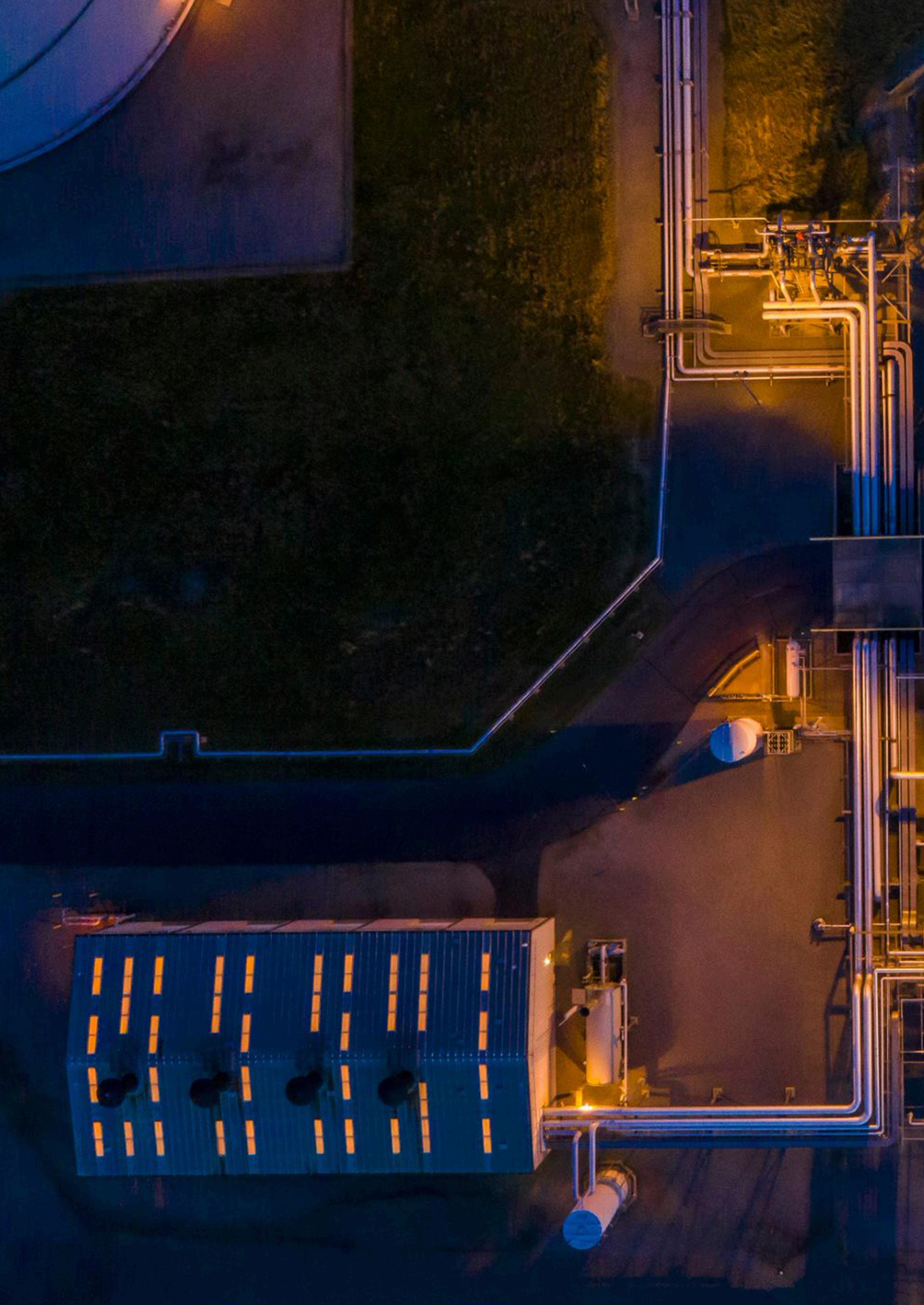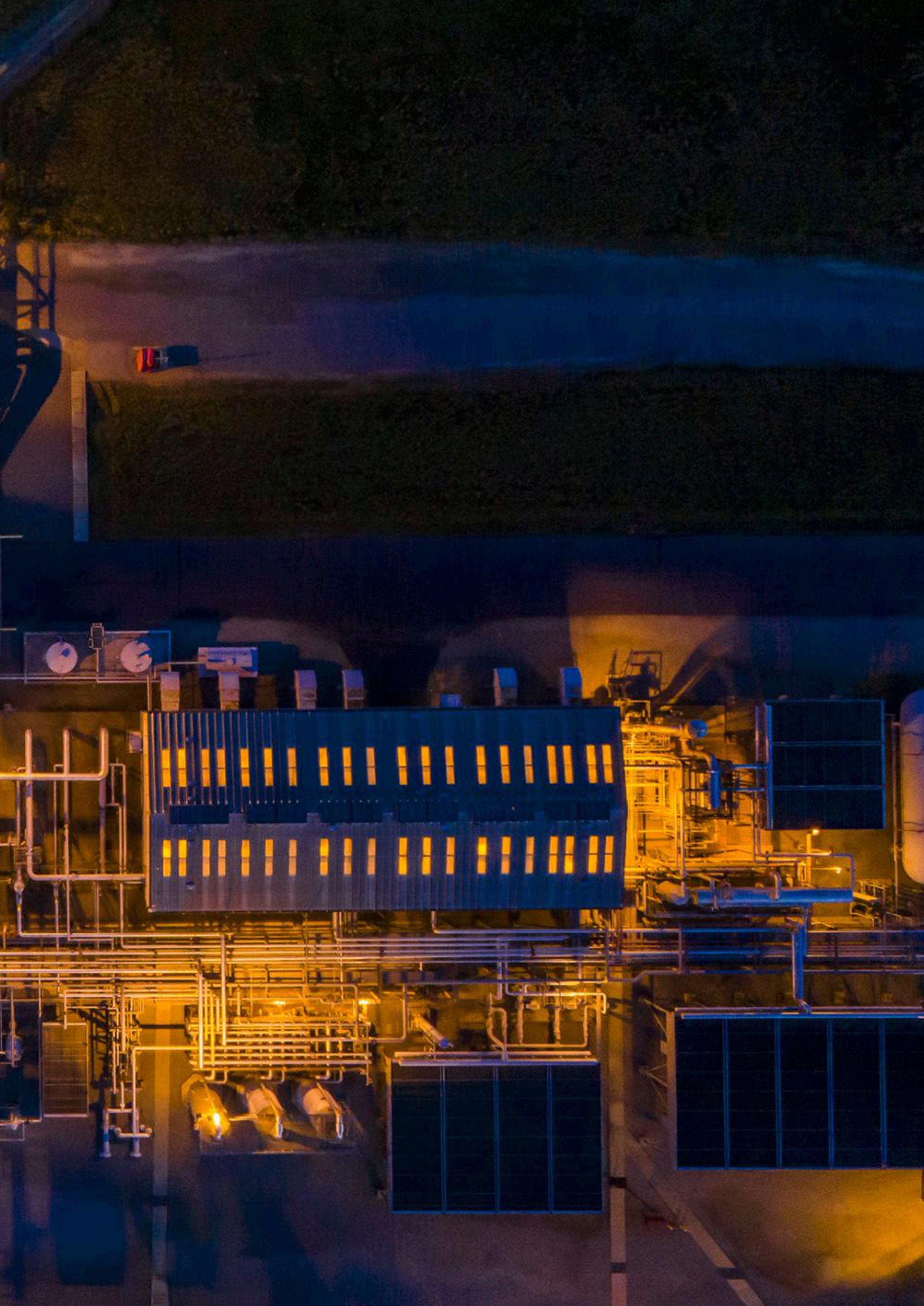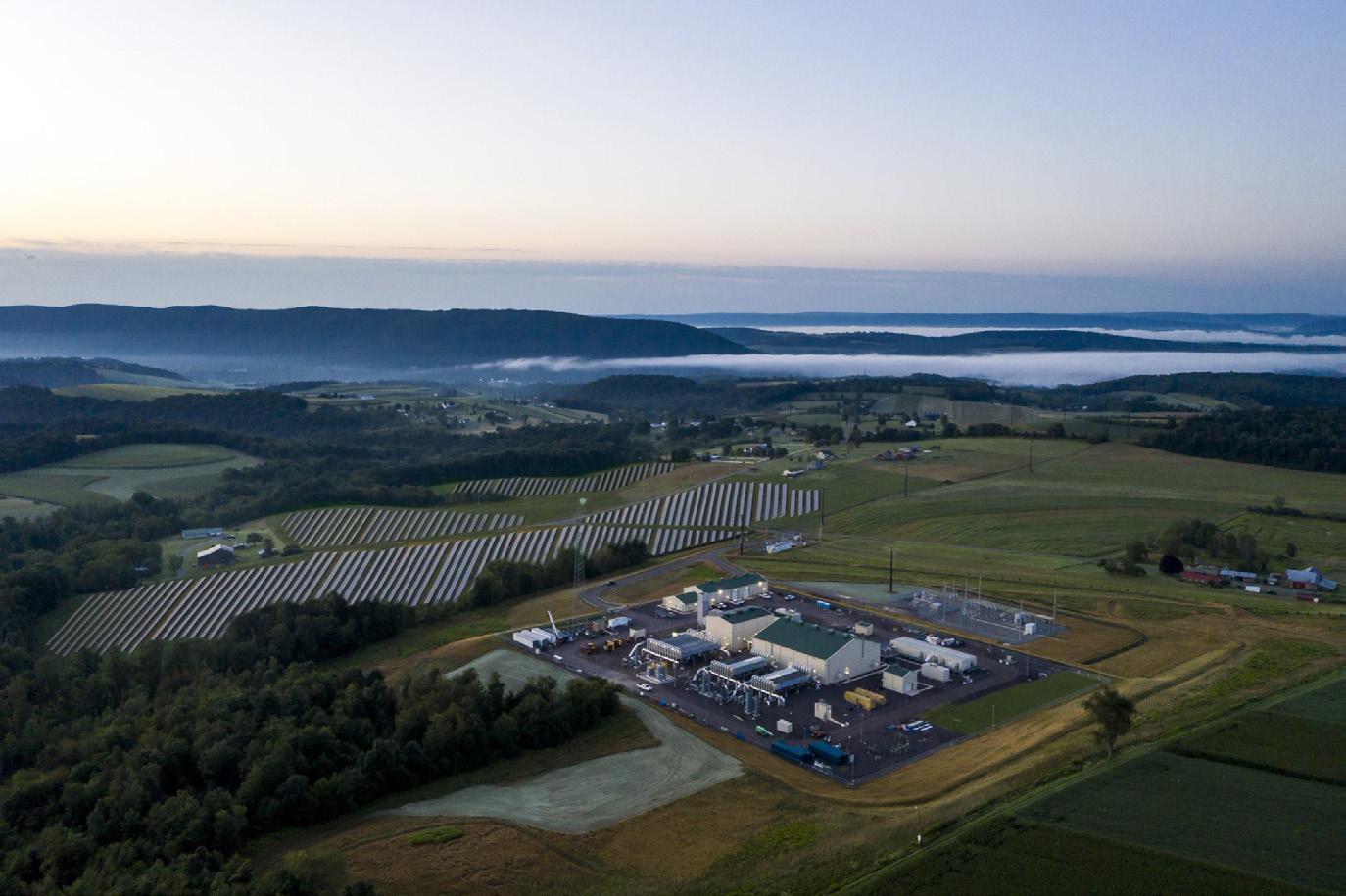
7 minute read
Building a clean energy economy
Jim Kibler, Executive Director, ONE Future, and Mark Gebbia, VP of Environmental, Regulatory & Permitting, Williams, USA, show that reducing methane emissions can ensure the future of natural gas.
hen ONE Future started in 2014, seven companies united around a goal to reduce emissions to 1.0% or less by 2025, and partnered with the EPA to launch a voluntary programme under the Methane Challenge. Since then, our membership has increased more than seven-fold, and we are now more than 50 members strong and represent almost 40% of the US natural gas value chain.
Our purpose is to ensure the future of natural gas as a foundational fuel, and to contribute to the climate solution. We began reporting our emission intensity in 2017, beating the 2025 target eight years ahead of schedule. Our members have beaten that target in each of the years that we have reported. Our 2021 report shows that our methane intensity, based on 2020 data, was less than one half of one percent. In other words, our members are 99.58% efficient in delivering a molecule of gas from the rig to the burner tip.
While natural gas is critical to our way of life, we realise that our emissions must remain low to ensure its sustainability long-term. We believe industry can further lower emissions as well as energy costs; Williams is one of the many ONE Future companies leading that charge.
Leading the way in clean energy delivery Williams, which handles 30% of US natural gas, is taking major steps to meet growing energy demand and maintain industryleading emissions rates. As the first North American midstream company to have established actionable climate targets, Williams has embarked on a multi-year modernisation and emissions reduction programme (ERP) to ready its transmission network for the future.
Williams is one of the largest and most experienced midstream companies in the US, linking upstream energy producers and downstream users. The company owns and operates more than 30 000 miles of pipelines system wide – serving major markets from the Gulf Coast to the Atlantic Seaboard, the Northeast (including Washington, D.C. and New York City) as well as Seattle, Portland and other major population centres in the Pacific Northwest. Williams moves the energy that is used every day for clean-power generation, residential and industrial use.
In 2021, Williams had reduced its company-wide Scope 1 and 2 emissions by 47% since 2005 on its way to meeting a 2030 goal of a 56% reduction below 2005 levels. In 2022, the company added to its all-employee annual incentive programme a total methane emissions reduction target of 5% from the three-year average, which personally connects every employee to a long-term commitment to safe, reliable and environmentally friendly operations.
“We have prioritised our natural gas-focused strategy because we see first-hand the critical role it plays in providing affordable and dependable low-carbon energy while supporting the growth of renewables,” Alan Armstrong, President and Chief Executive Officer said in July with the
Figure 1. The Transco Pine Needle LNG storage facility in North Carolina.

release of the company’s latest Sustainability Report. “At the same time, we recognise that more needs to be done to mitigate the risks of climate change and stimulate technology growth needed to build a viable clean energy economy.”
ONE Future working toward collective goal Williams is a member of Our Nation’s Energy Future Coalition, Inc. (ONE Future), a group of energy companies voluntarily working to reduce methane emissions by identifying policy and technical solutions that better manage emissions associated with production, processing, transmission and distribution.
Williams’ employees actively serve on the ONE Future technical committee, communications committee and board of directors to advance its mission. ONE Future members set a goal to reduce collective methane emissions in their supply chains to 1% or less by 2025.
Williams has committed to the ONE Future 2025 methane intensity goals for industry sectors of 0.080% for gathering and boosting, 0.110% for processing and 0.300% for transmission and storage. In 2020, the 51 member companies achieved a methane intensity of 0.424%, outperforming the ONE Future goal by 58%. Williams continues to exceed anticipated progress toward the ONE Future greenhouse gas (GHG) reduction goal.
Modernising for the future Williams is committed to reducing air emissions through modernisation programmes focused on retiring and replacing legacy equipment. The company’s ERP is a voluntary, multiyear, interstate natural gas transmission infrastructure investment project that aims to significantly reduce Transco and Northwest Pipeline compressor station NOX and methane emissions by replacing legacy natural gas-fired compressor equipment.
Williams will replace the retired horsepower with a combination of modern, low NOX-emitting natural gas-fired turbines and electric motor drive (EMD) compression equipped with compressor vent gas reduction systems. We project that these upgrades will reduce Williams’ system-wide transmission sector NOX emissions by over 75%, and compressor methane emissions by approximately 50% from recent levels.
In addition, Williams updated its Transco interstate natural gas transmission system alternatives evaluation process on compressor horsepower expansion and replacement projects. This process update strongly considers the feasibility of incorporating EMD compression over natural gas-fired compression, without significantly affecting system reliability. This strategy will not only mitigate GHG and criteria pollutant emissions at compressor stations, but will better position the company to reduce its Scope 2 GHG emissions as the electric utility grid transitions to renewable energy.
Recent projects deliver benefits Williams has completed modernisation efforts and redesigned Reducing Emissions with Selective operations at two Transco facilities located in Chatham, Catalytic Reduction (SCR) Technology
Gas Plant Combustion Unit Oxygen (O2)
Turbine Exhaust Containing NOx
SCR Catalyst
Vaporized Ammonia Water (H2O)
Nitrogen (N2)
Vaporizer
Aqueous Ammonia The selective catalytic reduction (SCR) process chemically reduces the nitrogen oxides (NOx) into molecular nitrogen and water vapor.
1 A nitrogen-based reagent such as ammonia or urea is injected into the ductwork, downstream of the combustion unit.
2 The waste gas mixes with the reagent and enters a reactor module containing catalyst.
3 The hot flue gas and reagent diffuse through the catalyst. The reagent reacts selectively with the NOx within a specific temperature range and in the presence of the catalyst and oxygen. A portion of the NOx is converted to water vapor (H2O) and molecular nitrogen (N2).
4 5
© 2022 The Williams Companies, Inc. 412/0522
Figure 2. Reducing emissions with selective catalytic reduction (SCR) technology.

Virginia, and Scottsville, Virginia, to help satisfy the growing demand for reliable clean energy in the region. Transco is the nation’s largest and most reliable interstate natural gas transmission pipeline.
The work began in early 2020 with the Southeastern Trail Expansion Project. Modifications at the Chatham facility included the permanent retirement of ten legacy natural gasfired reciprocating compressor engines and the commissioning of two new advanced combustion technology turbine compressors. Modifications at the Scottsville facility included an increase in horsepower of an existing electric motordriven compressor and the addition of one new advanced combustion turbine compressor.
The new combustion turbine exhaust systems are equipped with emissions control technologies to maximise emissions reductions at levels that go above and beyond
regulations. These facilities are the first Williams’ interstate natural gas transmission assets to implement turbine post-combustion selective catalytic reduction (SCR) emissions controls, resulting in ultra-low NOx emission rates. SCR systems are post-combustion emissions control technology installed on the turbine exhaust manifold. The system controls the turbine’s exhaust gas using a catalyst bed and ammonia injection grid to chemically convert nitrogen oxides (NOX) to nitrogen (N2) and water vapour (H2O). Advancing innovative technologies Williams recently launched New Energy Ventures to drive the commercialisation Figure 3. Rendering of a fully developed solar site at station 610 in Pennsylvania. and implementation of innovative technologies and markets in the clean energy business. By combining the company’s existing infrastructure, expertise and strategic relationships, Williams is developing such pragmatic solutions as solar installations to power company facilities, renewable natural gas interconnects from dairy farms and landfills, and digital platforms that provide market transparency for responsibly sourced natural gas. One key initiative that Williams is investing in will overlay satellite monitors and blockchain technology on core infrastructure to provide end-to-end measured, verifiable and transparent emissions data for real-time decisionmaking capabilities. Finally, the company is working to incorporate hydrogen and carbon capture Figure 4. Williams-protected wetlands near station 240 in New Jersey. and storage (CCS) into our existing network to serve some of the most populated areas of the US. As a result of Williams’ early entry and industry leadership into this space, Williams is being called upon by researchers and academics as well as US legislators intent on building clean energy solutions. Natural gas is critical Natural gas is critical for economic and climate security in the US and globally; continuous improvement is fundamental to ensuring that gas will play a positive role in both respects. ONE Future believes that industry can further lower emissions as well as energy costs, and the work that we do as a Coalition to foster innovation, improve technology, and develop cost-effective ways to find, fix, and prevent emissions is leading the industry. We are proud of the progress Williams has made and excited about their future initiatives, and we look forward to positive effects their efforts will have on both the Coalition, and the environment.


